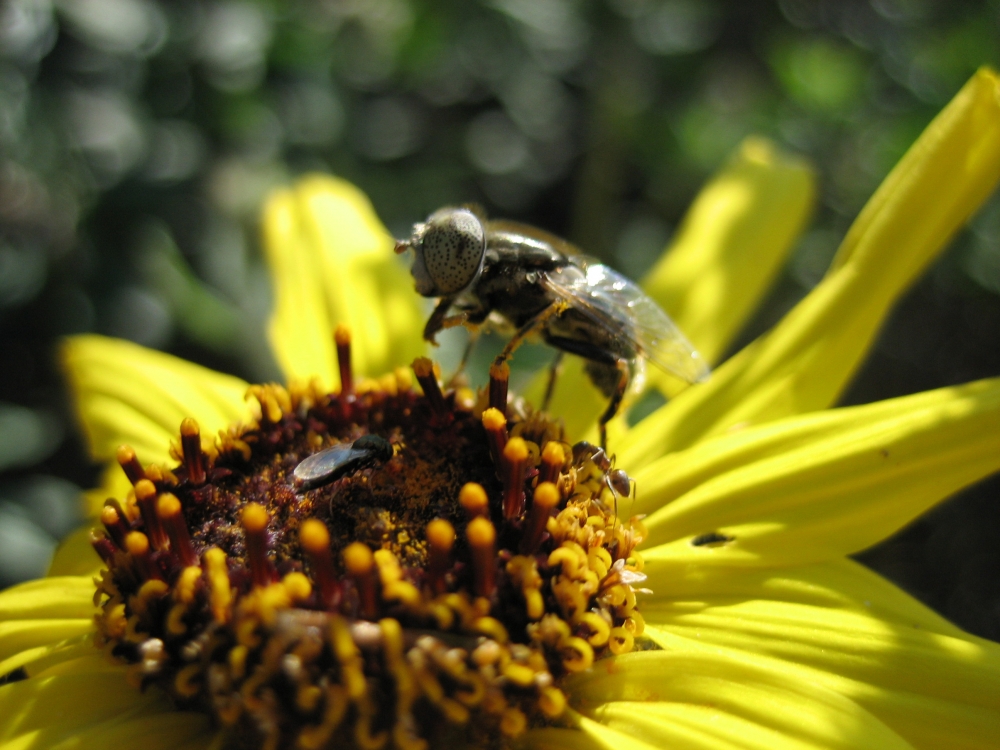
Increased Sexual Competition Among Flowering Plants in Biodiversity Hotspots May Lead to Extinctions, Says Study
The decline of birds, bees and other pollinators may be putting plants of the world's most diverse ecosystems at risk of extinction, according to a new study that analyzed hundreds of field studies investigating fruit production in hundreds of wild plant species.
The finding raises concern that more may have to be done to protect the Earth's most biologically rich areas.
The meta-analysis was sponsored by the National Center for Ecological Analysis and Synthesis at the University of California, Santa Barbara and was funded by the National Science Foundation. The article, "Pollination Decays in Biodiversity Hotspots," reporting the results, is published in the January 17 issue of the Proceedings of the National Academy of Sciences and is available online at the academy's website at www.pnas.org.
The analysis shows that ecosystems with the greatest number of species, including the jungles of South America and Southeast Asia and the rich shrubland of South Africa, have bigger deficits in pollination compared to the less-diverse ecosystems of North America, Europe and Australia.
"This is truly a synthetic work," said Susan Mazer, co-author of the article and a professor of biology at UC Santa Barbara. "Our detection of global patterns required the simultaneous analysis of many studies conducted independently by plant ecologists all over the world." The meta-study analyzes 482 field experiments on 241 flowering plant species conducted since 1981. The study took several years to complete and all continents except Antarctica are represented.
"This analysis can tell us things about ecological processes at the global scale that individual studies are not designed to tell us," she said, noting that the synthesis could not have been done 25 years ago because few careful field studies of this type had yet been conducted. Each individual study represented in the meta-study is highly labor-intensive and species-specific.
"The global pattern we observed suggests that plant species in species-rich regions exhibit a greater reduction in fruit production due to insufficient pollination than plant species in regions of lower biodiversity," said Mazer. The investigators suggest that high biodiversity "hotspots" are characterized by stronger competition among plant species for pollinators, such that many plant species simply do not receive enough pollen to achieve maximum fruit and seed production.
"Many plants rely on insects and other pollen vectors to reproduce," said first author Jana Vamosi, an evolutionary biologist and post-doctoral research associate in the University of Calgary's Department of Biological Sciences. "We've found that in areas where there is a lot of competition between individuals and between species, many plants aren't getting enough pollen to successfully reproduce. If plants can't survive, neither can animals. These biodiversity hotspots are important because they are where we most often find new sources of drugs and other important substances. They are also the areas where habitat is being destroyed the fastest."
Mazer cautioned that it is not yet possible to determine whether the high level of pollen limitation observed in species-rich areas is a new phenomenon or a long-standing one. It may be a recent problem due to habitat fragmentation or destruction, or it may be a long-term phenomenon. Plant species in ecologically-complex biodiversity hotspots may be continually faced with new competitors and simply cannot evolve as rapidly as their environment changes. If this is true, then pollen limitation may be a chronic problem for species in biodiversity hotspots – a challenge with which they have coped for millions of years.
"The pattern raises the alarm, however, that species in species-rich regions face two challenges that increase the risk of extinction: habitat destruction, which is occurring at alarming rates in the tropics, and reduced pollinator activity," said Mazer.
She described the typical field study included in the meta-analysis as one that looked at the likelihood that a flower will develop into a fruit –– with or without supplemental pollination. Experimenters compared untouched plants, those that were naturally pollinated, to those to which pollen was added by hand. If the plants that received added pollen showed increased fruit production then it is clear that the naturally pollinated flowers were not getting enough pollen to achieve maximum fruit production.
She also noted that studies revealing the relationship between local species diversity and inadequate pollination at the global level can be detected only by looking at hundreds of species. "Fruit and seed production in some species may be especially vulnerable to low pollinator activity," she said. "But it's the global pattern that's particularly important, not the individual species."
Other authors of the PNAS article besides Vamosi and Mazer include Tiffany Knight at Washington University; Tia-Lynn Ashman and Janette Steets at the University of Pittsburgh; and Martin Burd at Monash University in Melbourne, Australia.
Related Links



